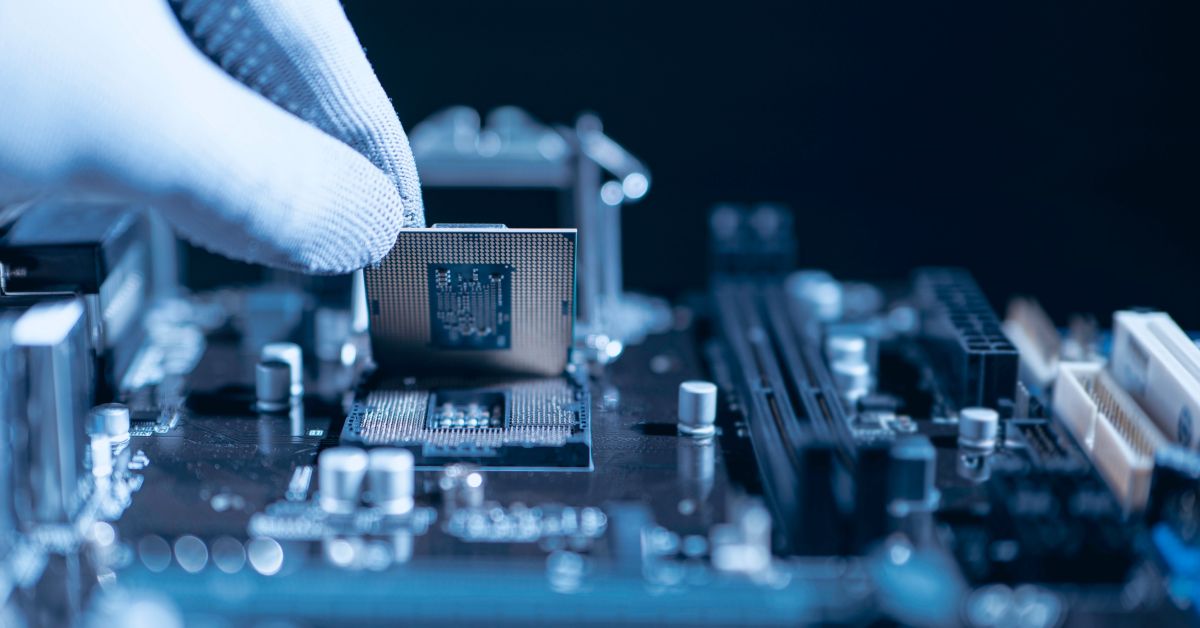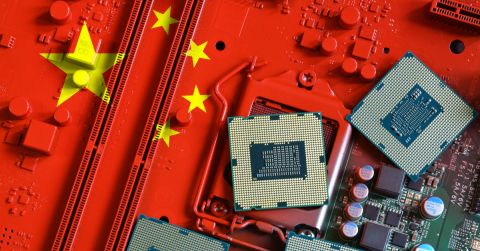The Rise of Antenna-in-Package (AiP): How Integration Is Reshaping RF Design

In the race to deliver faster, denser and more intelligent wireless systems, the antenna has quietly moved from the fringe of the design process to the center. Nowhere is that shift more apparent than in the rise of antenna-in-package (AiP) technology, a design approach that embeds high-frequency antennas directly into the semiconductor package.
For engineers working at the intersection of RF design and systems integration, AiP represents a necessary and transformative response to the physical demands of 5G, as well as a foundation for the frequency extremes and spatial precision that 6G will require.
Why AiP Now?
The decision to move the antenna from the board to the package is about physics. As frequencies move into the millimeter-wave (mmWave) and sub-terahertz (sub-THz) ranges, every interconnect, via and solder joint becomes a liability. Trace lengths that were once negligible at sub-6 GHz now introduce significant loss, phase distortion and parasitic behavior.
AiP solves this by co-locating the antenna and RFIC within a single package. This reduces path lengths, enabling co-optimization and making true beamforming arrays feasible in mobile-scale form factors.
5G’s mmWave deployments at 28 GHz and 39 GHz made AiP nearly mandatory for consumer devices. 6G’s target bands, 100 GHz to 300 GHz, will make it non-negotiable.
Design Benefits: More Than Just Size
While shrinking form factors is often cited as a core driver, AiP offers several other engineering advantages:
- Reducing RF losses by eliminating board-level routing
- Improving heat management by localizing sources and reducing board hotspots
- Enabling tight beamforming with phase-accurate array geometries for Massive MIMO
- Simplifying assembly by reducing part count and aligning with SiP strategies
- Supporting higher bands by eliminating traditional antenna feed limitations
These advantages are especially critical in environments where signal power is low and path loss is high, such as in mmWave indoor coverage or dense urban small cells.
Packaging Materials: It’s What’s Inside (and Around) That Counts
The performance of AiP modules depends heavily on the materials used. This includes the antenna materials, as well as the package substrate, interposer and encapsulation layers. Typical materials include:
- Low-temperature co-fired ceramic (LTCC), popular in infrastructure modules for thermal robustness
- Modified epoxy and liquid crystal polymer (LCP), used in consumer AiP designs for flexibility and low dielectric loss
- Glass and silicon interposers, emerging in 6G prototype designs for extreme frequency stability and fine-pitch routing
- EMI shields and radomes, used to prevent detuning from adjacent electronics, especially in multi-radio platforms
These material choices must be carefully tuned for dielectric constant, loss tangent and thermal expansion, particularly in stacked die packages where mechanical stress can impact long-term reliability.
Layout and Integration: 3D Is the New 2D
One of the most radical shifts in AiP is the transition to 3D vertical integration. Unlike traditional board-level antennas, which are often single-layer or planar, AiP arrays may include multiple dielectric layers, ground planes and parasitic elements all stacked within just microns of the RFIC.
Many mmWave AiP designs use flip-chip bonding to attach the RFIC directly to the package substrate, often with vertical vias feeding directly into the overlying antenna structure. Beamforming ICs, phase shifters and calibration logic are integrated at the same level or stacked beneath to create fully self-contained arrays.
In early 6G research platforms, lensed AiP arrays and reconfigurable metasurfaces are being explored. For example, there’s promising work on adaptive tuning that happens directly at the surface, enabling beam shaping and spatial filtering far beyond traditional phased arrays.
Leading AiP Systems
While AiP design is now widely adopted, only a few commercially deployed systems show the technology at full scale. Here’s a look at a few leading components and devices.
Qualcomm QTM5xx Modules
Used in Snapdragon-powered 5G phones, Qualcomm’s QTM565 module, part of the QTM5xx series, integrates 16- or 32-element patch arrays for 28 and 39 GHz bands. It includes built-in phase shifters, beam tracking logic and adaptive calibration, and is designed to pair directly with the Snapdragon X75 modem to deliver a full mmWave front-end solution in compact form factors.
Samsung Compact mmWave Radio Units
Samsung’s Compact Macro line integrates baseband, radio and antenna into a single enclosure, supporting both 28 GHz and 39 GHz bands with over 1,000 antenna elements. This AiP-based integration is deployed in dense urban 5G networks and enables high-precision beam steering while minimizing footprint and power loss.
Murata and pSemi AiP Development
Murata and pSemi have collaborated on developing mmWave AiP modules that integrate Murata’s multilayer ceramic packaging with pSemi’s beamforming RFICs and RF SOI switches. These modules are tailored for advanced 5G mmWave systems, offering flexibility for full IF-to-RF coverage across n257, n258 and n260 (mmWave frequency bands). Designed with future scalability in mind, they aim to accommodate the higher frequency demands anticipated in forthcoming 6G networks.
ASE’s D-Band Magneto-Electric Dipole AiP
ASE has developed a compact D-band AiP module using a 4×4 magneto-electric dipole array, covering 134–158 GHz with a peak gain of 15.2 dBi. Designed for sub-THz 6G systems, the array combines low side lobes with tight integration to support high-frequency mobile and fixed applications in a minimal footprint.
TMYTEK mmWave Antenna-in-Package Solution
TMYTEK’s AiP solution integrates phased arrays, beamformer ICs and up/down converters into a single module supporting Ka, Ku and K bands. Targeting 5G and SATCOM deployments, TMYTEK AiPs enable real-time beam steering in compact platforms where high data throughput and low latency are critical.
AiP and the 6G Horizon
Looking ahead, AiP will be essential to nearly every piece of 6G hardware from sub-THz mobile modems to compact sensing modules and intelligent surfaces. The frequency leap to 100+ GHz means that traditional antenna packaging is no longer feasible. Instead, engineers will lean on:
- Wafer-scale metasurface arrays that combine antennas, switches and tuners in one reconfigurable sheet.
- Glass-based AiP platforms offering ultra-low-loss routing and sub-millimeter-scale lattice control.
- Integrated sensing and comms arrays where beam steering supports both data transmission and spatial awareness.
These systems will require materials and layout innovation, real-time AI control, thermal prediction modeling and cross-discipline design collaboration.
Engineering Trade-offs and Real-World Limits
No integration strategy is without compromise, and AiP designs face unique challenges, including:
- Thermal limits when stacking high-power PAs close to sensitive antenna structures
- Manufacturing complexity, especially with fine-pitch interposers and hybrid bonding
- Tuning sensitivity where slight mechanical shifts can degrade array performance
- Testing and calibration at the module or board level rather than just at the die
These challenges are driving a renewed focus on electromagnetic co-design, where RF engineers, packaging experts and mechanical teams work together from day one.
The Signal Path Forward
Antenna-in-package design is the foundation of next-generation RF systems. For 5G, it made mmWave consumer devices viable. For 6G, it will enable truly mobile sub-THz performance.
As AiP evolves into reconfigurable, multi-function arrays, the line between antenna, package, and circuit will continue to blur. Engineers who understand how these layers interact – electrically, thermally and mechanically – will be positioned to deliver the high-performance systems of the 6G era.
In this new landscape, the antenna isn’t just part of the package. It is the package.









